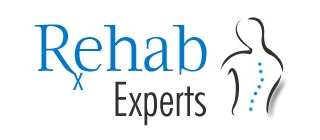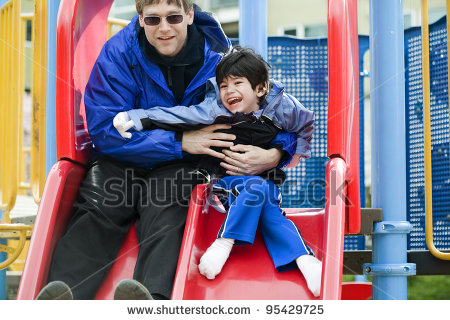Cerebral palsy (CP) is a disorder that affects muscle tone, movement, and motor skills (the ability to move in a coordinated and purposeful way). CP is usually caused by brain damage that occurs before or during a child’s birth, or during the first 3 to 5 years of a child’s life.
The brain damage that leads to cerebral palsy can also lead to other health issues, including vision, hearing, and speech problems, and learning disabilities.
There is no cure for CP, but treatment, therapy, special equipment, and, in some cases, surgery can help a child who is living with the condition.
There are several types of cerebral palsy
Spastic cerebral palsy
- Spastic hemiplegeiaA child with spastic hemiplegeia will typically have spasticity (muscle stiffness) on one side of the body – usually just a hand and arm, but may also involve a leg. The side that is affected may not develop properly. The child may have speech problems. In the majority of cases intelligence is not affected. Some children will have seizures.
- Spastic diplegiaThe lower limbs are affected, and there is no or little upper body spasticity. The child’s leg and hip muscles are tight. Legs cross at the knees, making walking more difficult. The crossing of the legs when the child is upright is often referred to as scissoring.
- Spastic quadriplegiaThe child’s legs, arms, and body are affected. This is the severest from of spastic cerebral palsy. Children with this kind of cerebral palsy are more likely to have mental retardation. Walking and talking will be difficult. Some children have seizures.
Ataxic cerebral palsy
The child’s balance and depth perception are affected. Depth perception refers to a person’s ability to judge where objects are in relation to where he/she is. It is the least diagnosed type of cerebral palsy. The child will find it difficult to tie his/her shoelaces, button up shirts, cut with scissors, and other fine motor skills. Because of balance difficulties, the child may walk with the feet far apart. There may be intention tremors – a shaking that starts with a voluntary movement, such as reaching out for a toy, the closer he/she gets to the toy the worse the tremors become. Most children with ataxic cerebral palsy are of normal intelligence and have good communication skills. Some may have erratic speech.
Athetoid or dyskinetic (or athetoid dyskinetic) cerebral palsy
This is the second most common type of cerebral palsy. Intelligence will nearly always be normal, but the whole body will be affected by muscle problems. Muscle tone is weak or tight – causing random and uncontrolled body movements. The child will have problems walking, sitting, maintaining posture, and speaking clearly (tongue and vocal cords are hard to control). Some children drool if they have problems controlling facial muscles.
Hypotonic cerebral palsy
Muscle problems will appear much earlier. The baby’s head is floppy, and he/she cannot control the head when sitting up. Some parents have described their child’s movements as similar to that of a rag doll. The baby gives only a moderate amount of resistance when an adult tries to move their limbs. The baby may rest with his/her elbows and knees loosely extended, compared to other infants whose elbows/knees will be flexed. Some babies may have breathing difficulties.
Injury to the cerebellum can result in this type of cerebral palsy.
How Can a Physical Therapist Help?
A physical therapist is an important partner in health care and fitness for anyone diagnosed with CP. Therapists help people with CP gain strength and movement to function at their best throughout all the stages of life.
The physical therapist will provide care at different stages in the individual’s development, depending on his or her unique needs. Therapy may be provided in your home or at another location such as a community center, school, or a physical therapy outpatient clinic. The physical therapist will work with other health care professionals, such as speech/language pathologists or occupational therapists, to address all the individual’s needs as treatment priorities shift.
Physical Therapy in the Early Years: Birth to Age 4
Physical therapists can help caregivers support their child’s movement development by providing hands-on training for positioning, movement, feeding, play, and self-calming. Your therapist will also suggest changes at home to encourage movement development, as well as communication, hearing, vision, and play skills. It is important to remember that it is through play that young children learn many skills. Your therapist will develop an individual program of play activities that match your child’s specific needs—to improve strength, movement, and function. At this age, physical therapy is generally provided at home, in a daycare center, or in an outpatient clinic.
Physical Therapy in the School Years: Ages 5 to 12
Physical therapists train caregivers to help the child with CP accomplish functional goals and promote the highest quality of life through all stages of development. The treatment plan and goals will change as your child ages. Pre-school and school bring challenges for your child to navigate new environments each year. At this age, children also experience growth spurts, requiring adjustments to therapy and equipment used to help the child. Care priorities can focus on walking, transfers, personal hygiene, play, socialization, and adaptive equipment needs to meet the social and physical changes that occur during this time period. Physical therapy may be provided in outpatient and/or school settings. School-based therapy focuses on accommodations and modifications to ensure your child has the best possible learning environment.
Physical therapy benefits the adolescent with CP by focusing on prevention of posture problems and joint limitations. This is done by encouraging mobility and fitness, managing muscle and/or joint pain, and recommending braces and other helpful equipment to maintain health and function. The physical therapist will educate parents about self-care, maintaining daily routines, socialization, physical activity, and plans for the child’s schooling and future careers.
It is important to note that lifelong health habits are formed at this age—and developing an individual fitness program can improve the person’s health and function for the remainder of his or her life. Children with CP are at a greater risk than the general youth population of not exercising enough and becoming sedentary, which can lead to weight issues and medical complications. These issues progress gradually but can have a significant impact on the quality of life of the child and of the caregivers. Physical therapists are skilled in developing individual exercise programs that use each child’s strengths and abilities. For instance, a therapist might recommend adaptive sports such as bowling, swimming, cycling, volleyball, tennis, and basketball to promote physical fitness and socialization with peers.
Physical Therapy in Adulthood: Age 18+
Many individuals with CP live highly functional lives as adults. Many have careers and families. In adulthood, people with CP often focus on pain management, conserving energy, adaptive equipment, and environment modifications to promote independence at work and at home. Physical therapists can help with managing these concerns. Like many adults, individuals with CP have muscle and joint pain in adulthood. Physical therapists can prescribe an exercise routine that enables the individual to stay strong and minimize joint issues.
Physical therapists are skilled in all of these areas, and they partner with people with CP and their caregivers to address their individual goals for realistic, positive outcomes.
What Kind of Physical Therapist Does your child Need?
All physical therapists are prepared through education and experience to treat patients with cerebral palsy. However, you may want to consider:
- A physical therapist who is experienced in treating people with CP
- A physical therapist who focuses on treating infants and children
- A physical therapist who is a board-certified clinical specialist or who has completed training in pediatric or neurologic physical therapy, meaning he or she has advanced knowledge, experience, and skills
Reference:
Kids Health http://kidshealth.org/parent/medical/brain/cerebral_palsy.html
Medical News Today http://www.medicalnewstoday.com/articles/152712.php
Move Forward http://www.moveforwardpt.com/symptomsconditionsdetail.aspx?cid=29dfec56-f6ff-4609-a92b-8626c9e544c0

